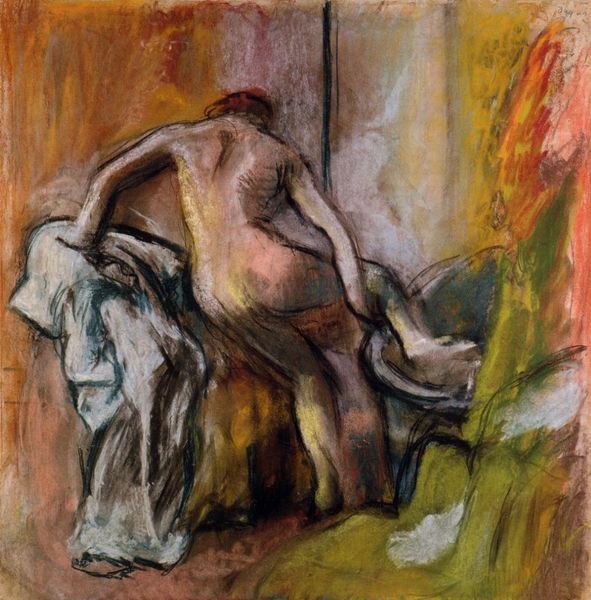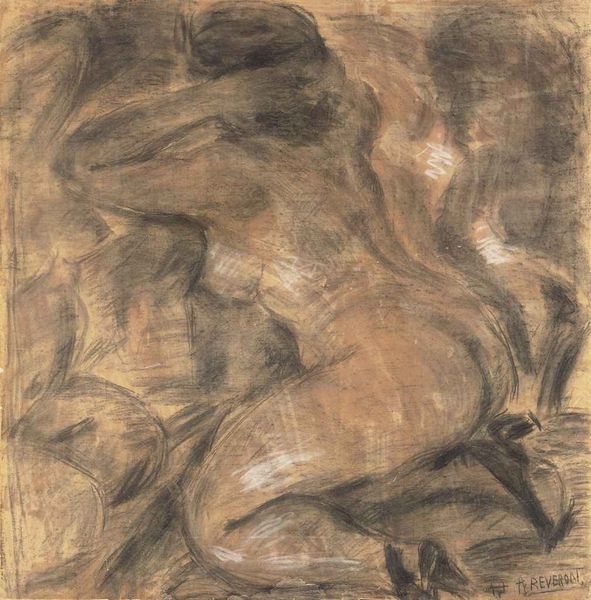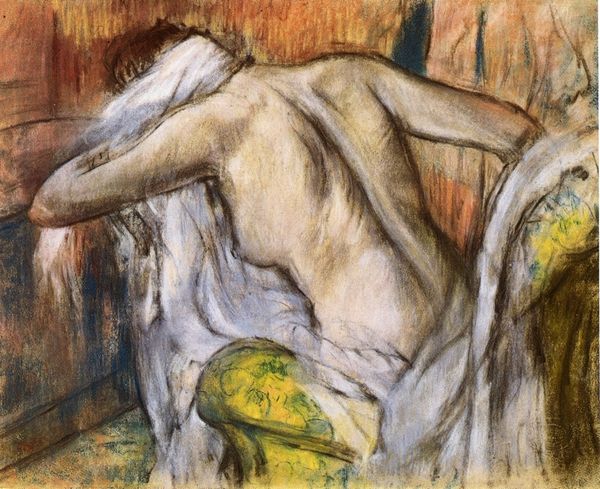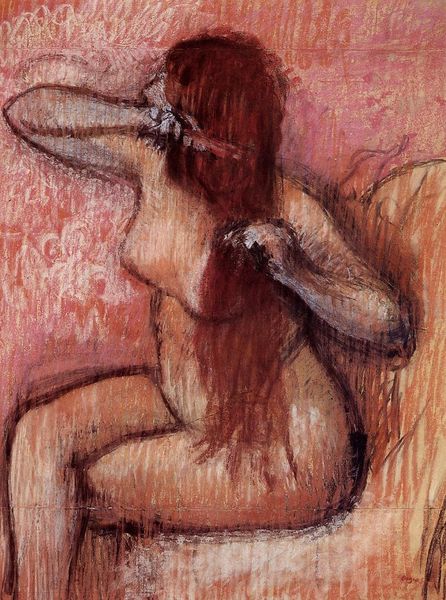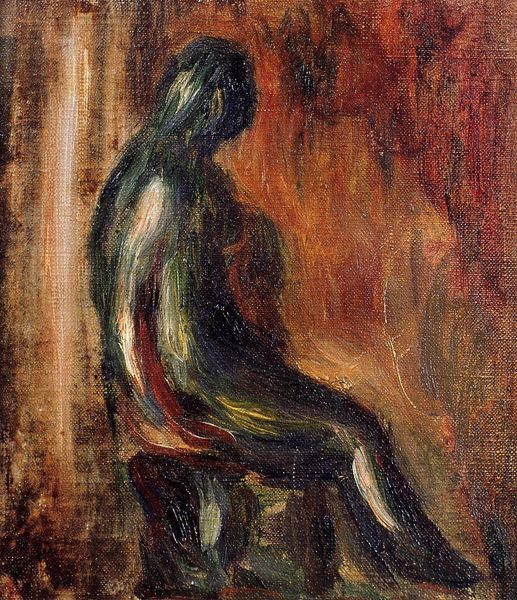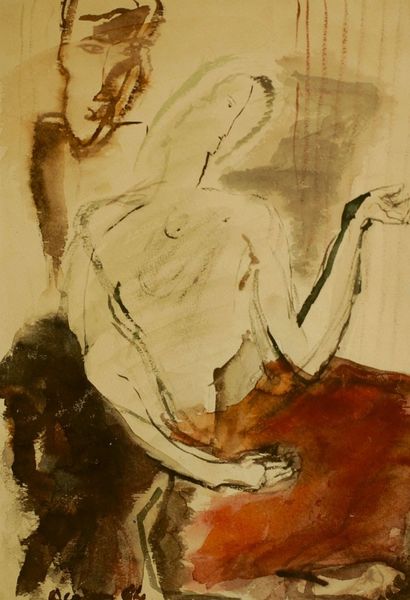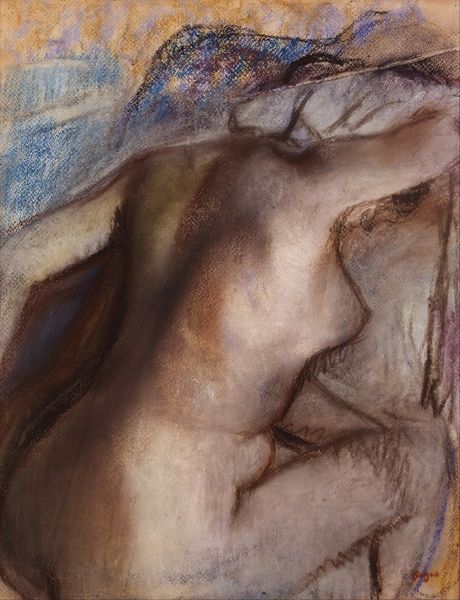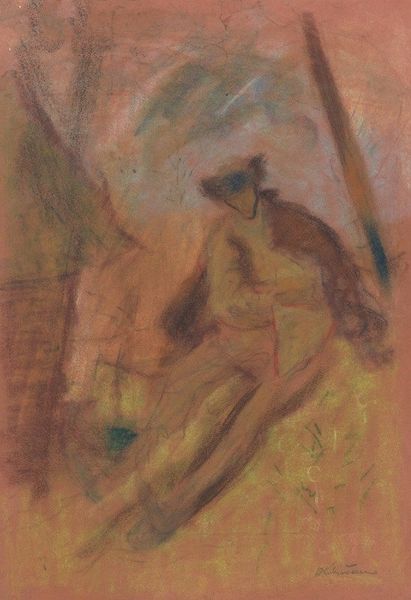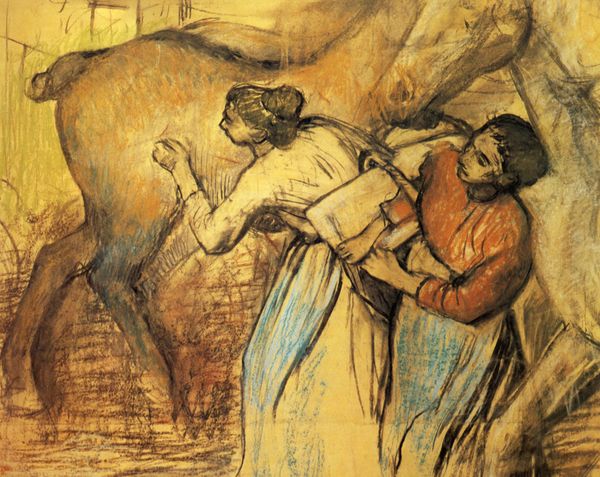
Copyright: Public domain
Curator: We're looking at Edgar Degas' "After Bathing, Woman Drying Herself," created around 1905 using charcoal and pastel. It resides in a private collection, a poignant snapshot into private life. Editor: Whoa, intense! At first glance, it feels almost volcanic, like she's emerging from some hot spring. So raw. Curator: The dynamic pose, achieved through energetic lines, showcases Degas’ focus on movement. The red and orange hues envelop the subject, while the white strokes accentuate the figure’s curves. It's all about the body as form, an object of aesthetic scrutiny, not sentiment. Editor: Aesthetic scrutiny, huh? Maybe. But I see vulnerability, too. The awkward bend of her body, the unseen face… she’s not posing. It’s like we’ve caught her in a private moment, completely unaware. Those fiery colors also bring to mind her exposed, heated skin. Curator: Quite right, although this aligns with Degas’ larger project. We might analyze how the diagonal composition enhances the sense of fleeting time, emphasizing the impermanence of the captured moment. It disrupts traditional idealized nudes. Semiotically speaking, of course. Editor: Well, maybe, if semiotically speaking means noticing that her awkward pose defies the male gaze. Her form suggests more work-worn fatigue, but a defiance of any conventional art standards that elevate, but ignore the grit of real life. I find this very, very interesting. The background and figure bleed into one another – almost as though they share the same, essential substance. Curator: The materiality becomes vital here: Degas layers pastel strokes, building form with color, light, and texture. This dissolution of boundaries, the merging of figure and ground, reinforces the fleeting quality of the image. The very visible marks disrupt academic notions of illusionism, and call into attention the medium of representation itself. Editor: It reminds me of those hurried sketches in sketchbooks. Personal. Intimate. It’s beautiful in its unfinished-ness, its realness. But at the end, she seems resigned, isolated by this most mundane, daily task. Curator: A fascinating set of interpretations. It seems we've both managed to distill very disparate readings out of what at first may seem like simple charcoal strokes! Editor: And isn’t that the point of art anyway? Stirring that cauldron of ideas. Degas still got it.
Comments
No comments
Be the first to comment and join the conversation on the ultimate creative platform.
